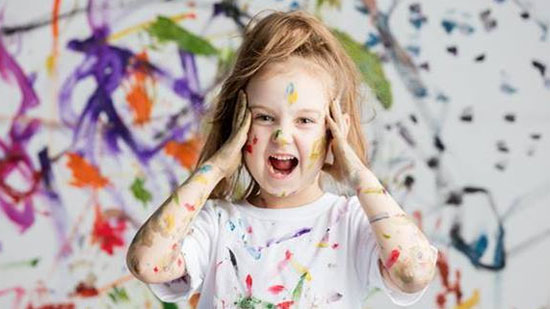Posted on 23rd July, 2023

Children need colors for their wholeness and well-being, just as food and water and our kids are usually eager to tell us about their favorite colors when they are old enough.
When we offer color choices to our children - toothbrushes, clothing, toys, crayons - we can identify their favorite colors and any shifts in their color preferences. Each color vibrates at specific frequencies, and the children's most preferred colors resonate with the most needed energies for their health and overall well-being. Color therapy is widely used in holistic treatments as it's an effective way to create balance and harmony in our whole being.
As you observe your children's favorite color, it's beneficial to add to their environment as:
Color-infused drinking water - one of the simplest yet very effective ways is to impregnate their drinking water with the energy of certain colors. You need a colored bottle made of glass; place a clear quartz crystal in the bottle, then fill it with purified water. Place the glass on a windowsill in direct sunlight for a day. Sunlight shining through the colored glass will energize the water and elevate its frequency. Offer the water from the bottle to your child, refill the bottle and replace it in the sun.
Creative visualization - parents can visualize their children showered in a glow of their favorite color; you can practice this simple method for 7-10 minutes whenever you feel.
Red - is recommended for weak, vulnerable kids that lack vitality and dynamism. Red can activate the spleen and stimulate the secretion of hormones that accelerate development and growth. This stimulating color must be approached cautiously as it can enhance anger and aggression in children.
Orange - is beneficial in improving muscle control. Also, it can be really helpful in case of delayed potty training success.
Yellow - is very effective for children who lack self-confidence and willpower; it helps them understand how they fit into a power structure.
Green - brings comfort and a sense of security to the heart. It is an excellent color for kids who experienced early loss or trauma. I recommend using green for kids when a new sibling arrives to help them feel safe and loved.
Blue - is a soft, calming color beneficial for kids with verbal expression problems. The calming green and blue are also helpful for aggressive children. These two colors are also beneficial for premature newborns, ill infants and children who need medical treatment, as both colors are emotionally stabilizing, nourishing, and reassuring.
Crystals and rocks come in many colors, and kids are naturally attracted to them. When you let your children play with stones and integrate crystals into their environment, they will benefit from the stones' energy and color. You can place colorful crystals:
It's recommended to cleanse the crystals every three weeks or so to get rid of the accumulated negative energies.
Color therapy can also be combined with music therapy. According to their vibration, vowels and consonants are correlated with colors. The mother's voice humming is very reassuring for the little ones.
Through the 7 notes, we connect with the energies, vibrations, and levels of interactions that exist on planet Earth. So sing and humm in any form that pleases you and know that it satisfies, nourishes, and teaches the soul which has been given to your care. Babies and young kids respond very well to subtle energies until the age of six. God's subtle pure energies can nourish, balance, and heal them.
I am so delighted to see mothers, after our intuitive reading sessions, develop an improved awareness and understand better their child's need for certain colors.